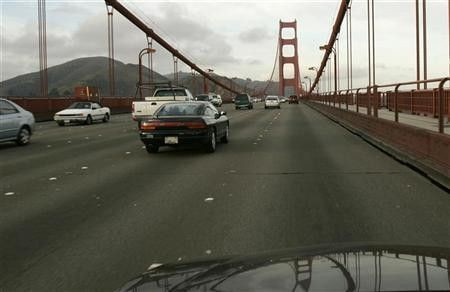California sets landmark rules to cut auto emissions

California approved aggressive new rules on Friday to reduce greenhouse gas emissions by requiring automakers to put many more electric and hybrid vehicles on the Golden State's roads by 2025.
The regulations were approved unanimously by nine members of the state's powerful air-quality regulator, the California Air Resources Board, at a meeting in Los Angeles.
They are expected to cut greenhouse gas emissions by 34 percent and smog and soot pollutants by 75 percent by 2025, in part by putting 1.4 million electric, plug-in and hydrogen vehicles on the state's roads.
The program would also mandate the development of an infrastructure for hydrogen fueling stations.
Californians have always loved their cars ... Now we're going to have cleaner and more efficient cars to love, CARB Chairman Mary Nichols said on a conference call with reporters following the vote. This really is a historic new chapter in California's history with the automobile.
The influential CARB voted on the rules following a two-day hearing that included testimony from automakers, environmentalists, politicians and consumer advocates. The rules will affect vehicles beginning in the 2017 model year.
The rules are part of the state's aggressive plan to reduce climate warming emissions by 80 percent by 2050. California is the biggest U.S. car market and has had the distinction of being able to set policy independent of federal rules, making it into a laboratory for change over the years.
HANDWRITING ON THE WALL
About 40 percent of California's greenhouse gases come from vehicles and the state's new rules aim to stimulate production of so-called zero-emission vehicles, or ZEVs, which include cars that run on electric batteries and fuel cells.
The state wants ZEVs such as Nissan Motor Co Ltd's all-electric Leaf or plug-in hybrids such as General Motors Co's Chevrolet Volt to make up more than 15 percent of new vehicle sales by 2025.
But California has said plug-in hybrids would be transitional vehicles, adding that 87 percent of the cars on the road will have to be pure ZEVs by 2050 for the state to achieve its goals.
The target is an aggressive one considering that such vehicles make up well below 1 percent of the current market and California has been forced to scale back its ZEV goals in the past because vehicle technology lagged the state's hopes for putting clean cars on its roads and highways.
In 2008, the ARB reduced the number of pure ZEVs to 7,500 for the three years from 2012 to 2014 from a previous requirement of 25,000.
Since then, however, automakers have stepped up their investment in more fuel-efficient vehicles, including battery electric cars - a development Nichols said made CARB's decision easier.
The level of consensus is the highest that I've ever seen, Nichols said, adding she had seen a real change in attitude on the part of auto companies, who have seen the handwriting on the wall that their future lies in these vehicles.
An auto industry trade group, however, said automakers are opposed to a clean vehicle mandate.
Mandates create a disconnect in the marketplace. Automakers are mandated to build products that consumers are not mandated to buy, the Alliance of Automobile Manufacturers said in a statement.
Still, California's new rules include a provision to allow automakers that overcomply with fuel efficiency requirements across their fleet to offset their ZEV requirement, an apparent acknowledgment of the slow pace of getting such vehicles into the mass market.
The state said that, although new, fuel-sipping technologies will increase the cost of a new vehicle by about $1,900, those costs will be more than offset by $6,000 in fuel cost savings over the life of the car.
© Copyright Thomson Reuters {{Year}}. All rights reserved.





















